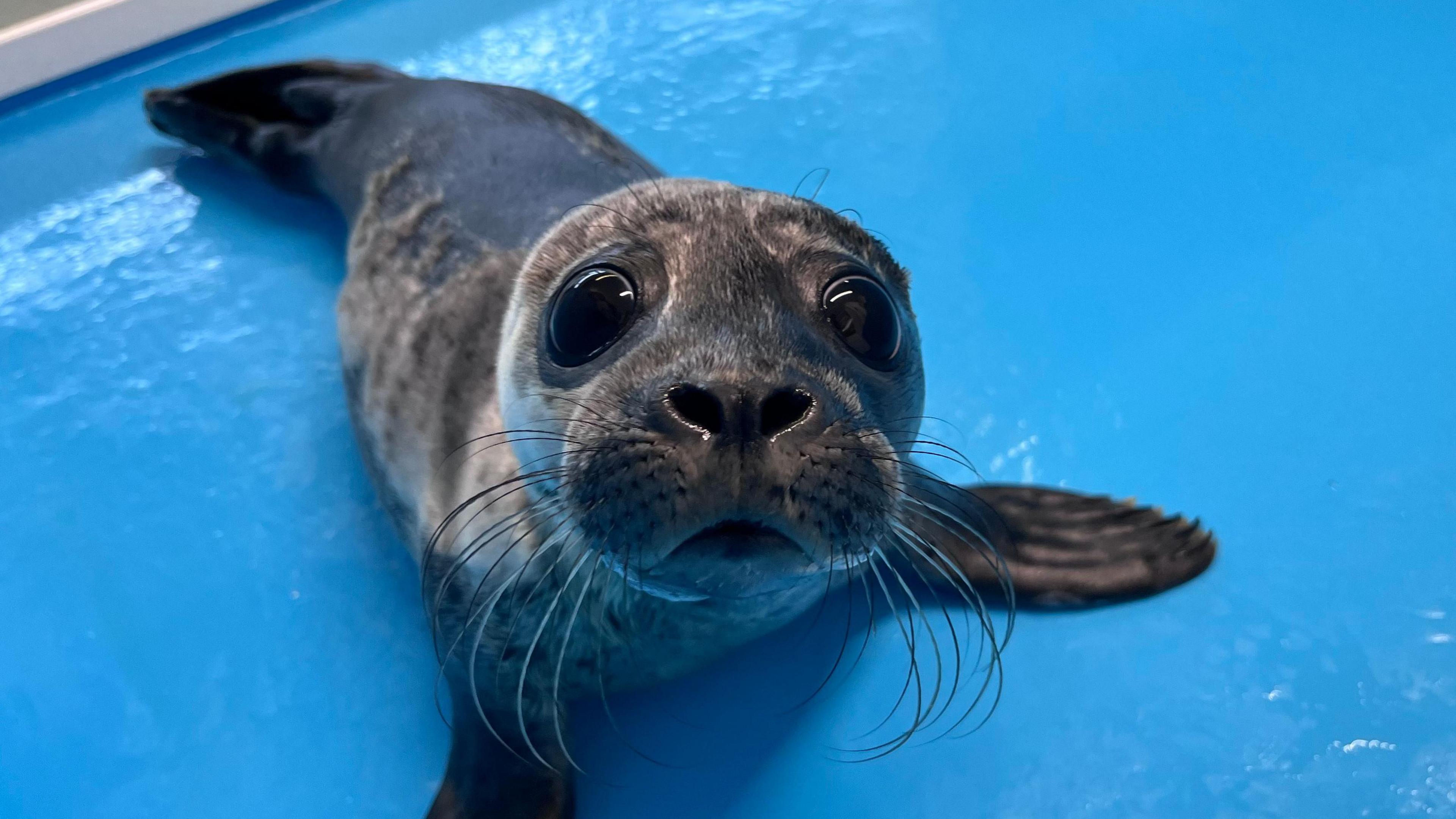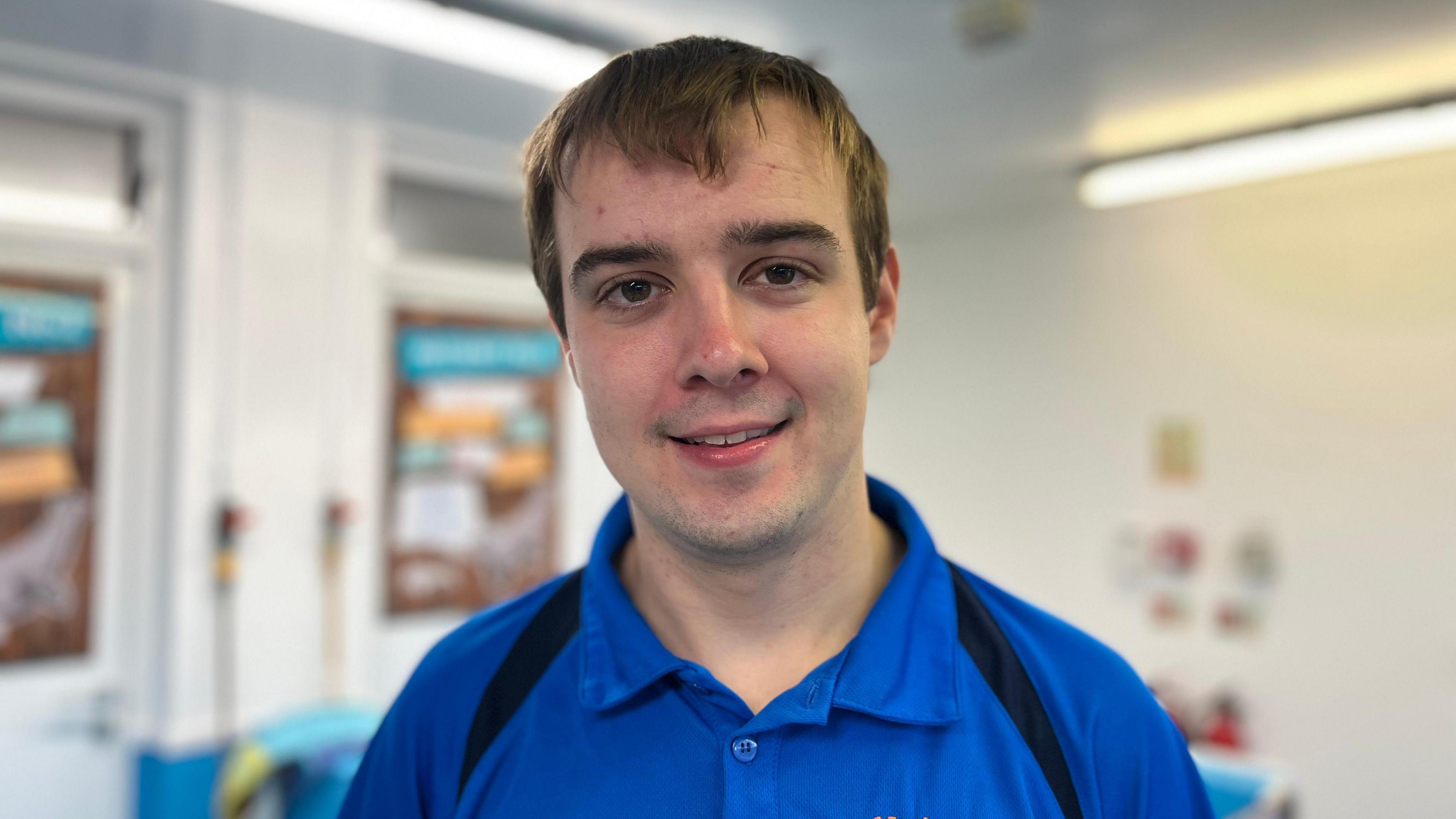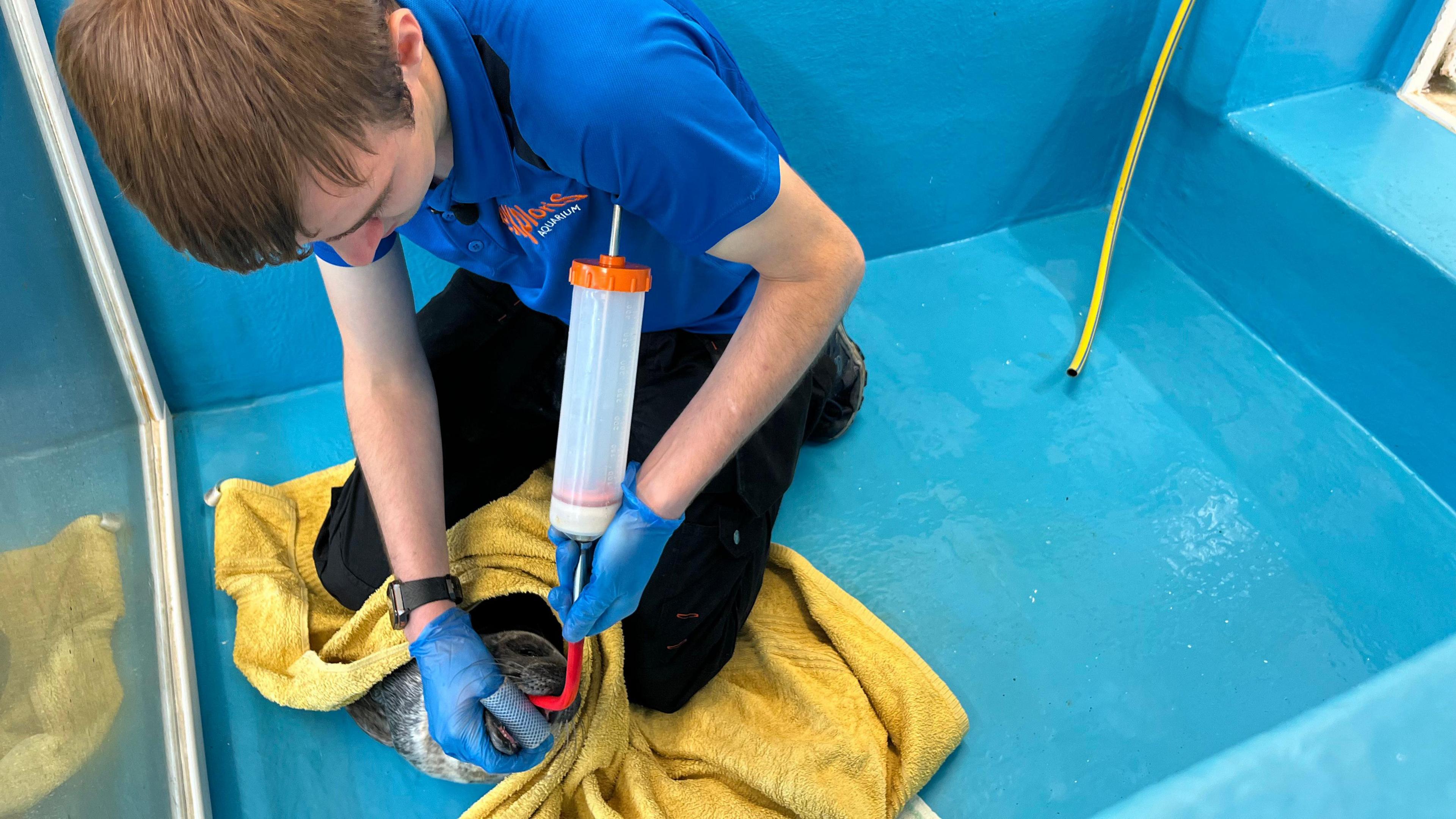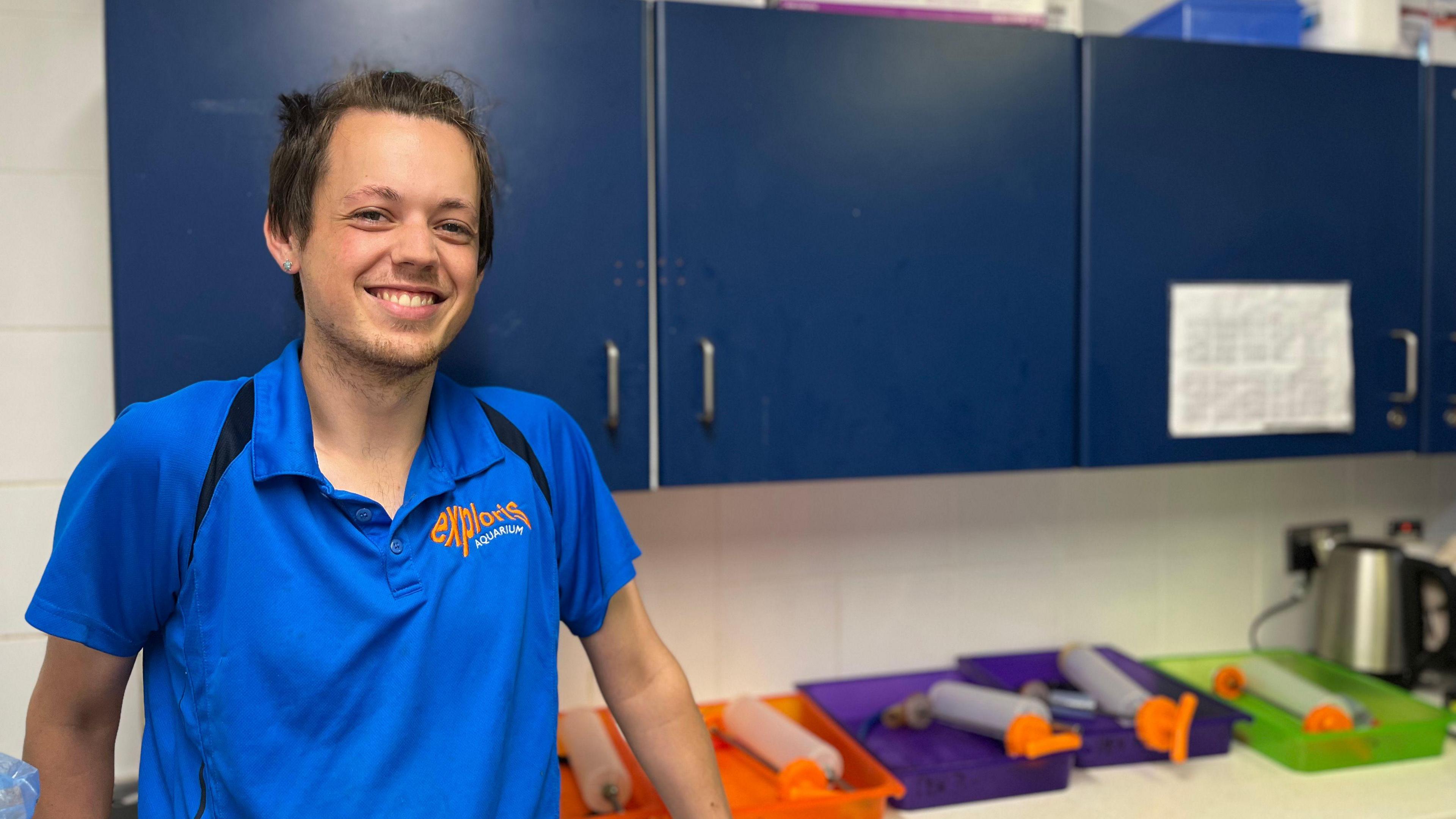Public urged to keep distance from seal pups

This two-week-old harbour seal pup was rescued from Belfast Harbour
- Published
It is seal pupping season on Northern Ireland's coastline, but members of the public are being asked to look from a distance and not approach the pups.
"Abandonment is the biggest issue that we see in here, and a lot of that is because they are born on busy public beaches," said Euan Morrison, head keeper at Exploris Seal Rescue and Rehabilitation Centre in Portaferry, County Down.
He told BBC News NI scent played a large role in the bonding experience between a mum and her pup.
"A few years ago we had a grey seal who was moved about by some members of the public and we went back the next day to check on him and he had been bitten all over," said Euan.
"We think he went up to mum looking for food and she didn't know who he was and tried to get rid of him."

Euan Morrison is head keeper at the Seal Rescue and Rehabilitation Centre
Since opening its doors in 1989, the sanctuary has helped rehabilitate and return nearly 600 sick, injured, or abandoned seal pups back into the wild.
With a new season beginning, staff at the centre are bracing themselves for another busy period with five harbour pups already admitted.
Seals are legally protected from killing and intentional or reckless disturbance.
The Portaferry-based centre has asked the public to be mindful of the mammals this summer by taking pictures from a distance and contacting them should they have any concerns, external.
"Usually if a seal is on land there's a reason for it," said Mr Morrison.
"So we don't want to be trying to put them back in the water, they're not whales or dolphins, they're absolutely fine out of water.
"Keeping an eye on dogs is also really important."
'Harbour seals are our biggest concern'

The centre rescues between 20-30 seals per year
Two species of seal inhabit the coast and seas around Northern Ireland, according to the Department of Agriculture, Environment and Rural Affairs (Daera).
The harbour seal is smaller, has a dog-like face and prefers more sheltered areas.
The grey seal is larger, has a longer head and is more often seen in exposed areas.
In 2024 there were about 1,185 harbour seals on the coastline around Northern Ireland, compared to an estimated 3,165 grey seals.
Because of the lower population numbers, the sanctuary has prioritised conservation efforts around harbour seals.
"The tight window between June and July when harbour seal pups are born is our biggest concern," Mr Morrison said.
"They are the smaller of the two species and their numbers have not done as well as the grey seals."
The road to recovery
From rescue to release, the road to re-entering the wild has several stages including being placed in a hospital pen, feeding, learning to swim and socialise with other seals in a nursery pool, and finally learning to swim and feed in deeper waters in a pre-release pool.

If all goes to plan the five seal pups will be released back into the sea in October
Aran Pollock, who is part of the animal care team, said without the round-the-clock care provided by the sanctuary many of the seal pups would starve or freeze to death.
"When you see them come in, some of them are in awful condition, they're just tiny," he said.
The seals are cared for by staff at the centre and tube-fed milk to build their strength before they are released.
"Once we have taken care of them enough, once we know that they can eat fish by themselves, when we know that they can swim very well in our deep pool, then there are pretty much no worries."
However, each released seal has a tag so staff are able to keep an eye on their rescues even when they return to the wild.
What to do if you spot a seal pup
Grey seal pupping typically runs from the end of June into July.
Baby seals are born with a white fluffy coat to keep them warm and rarely enter the water in their first few weeks, so it is not uncommon to see them on beaches, rocks, and harbours around the coast.
Seals will often leave pups on the shore to hunt for food and may not return if there are a lot of people in the area around the pup.
Members of the public should not attempt to return a seal to the water.
Exploris advises people to keep dogs on a lead when walking on beaches, warning that grey seals in particular are capable of inflicting nasty bites and could injure dogs.
If you believe a seal is injured or in distress you can contact Exploris, external for help.